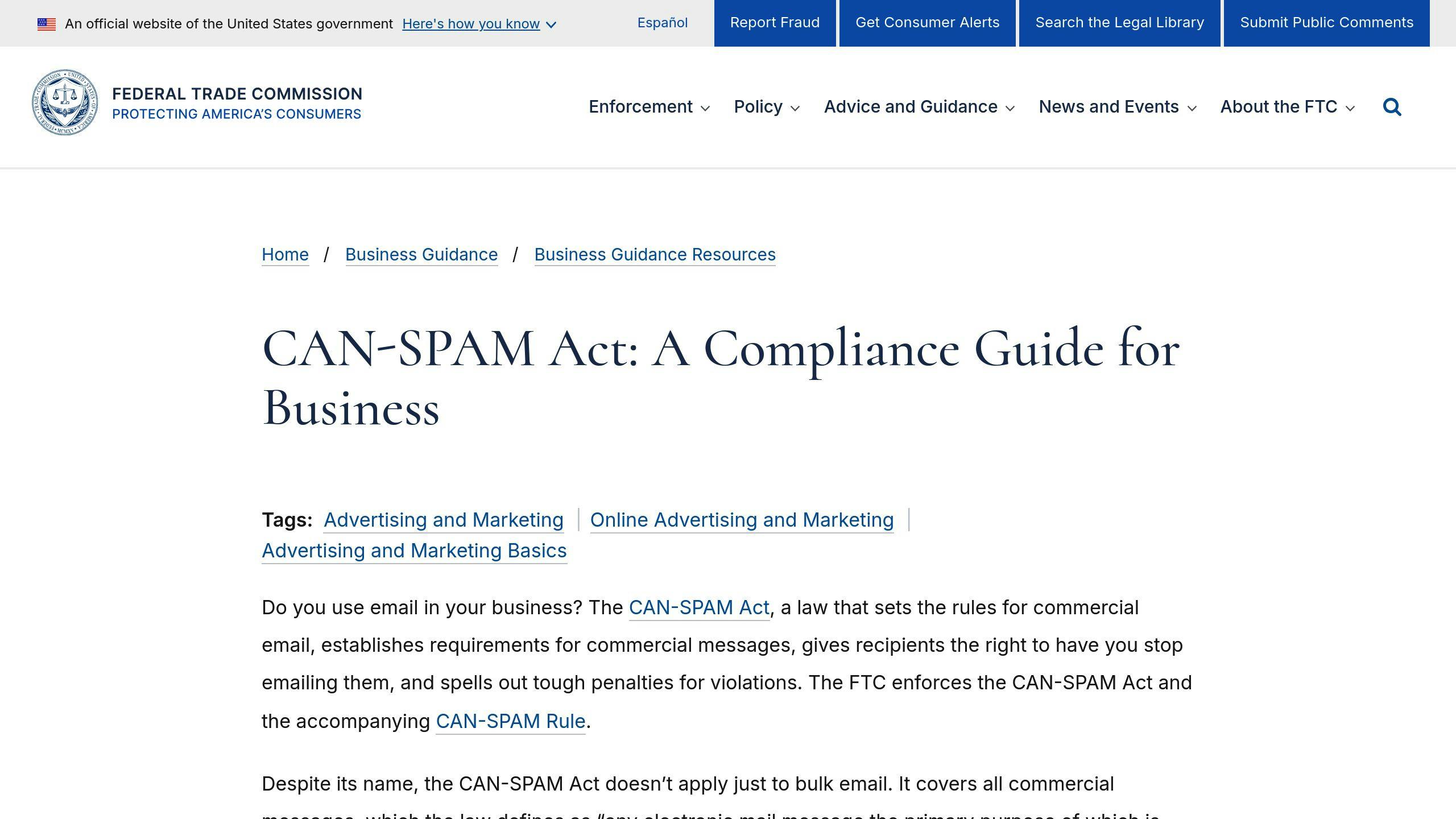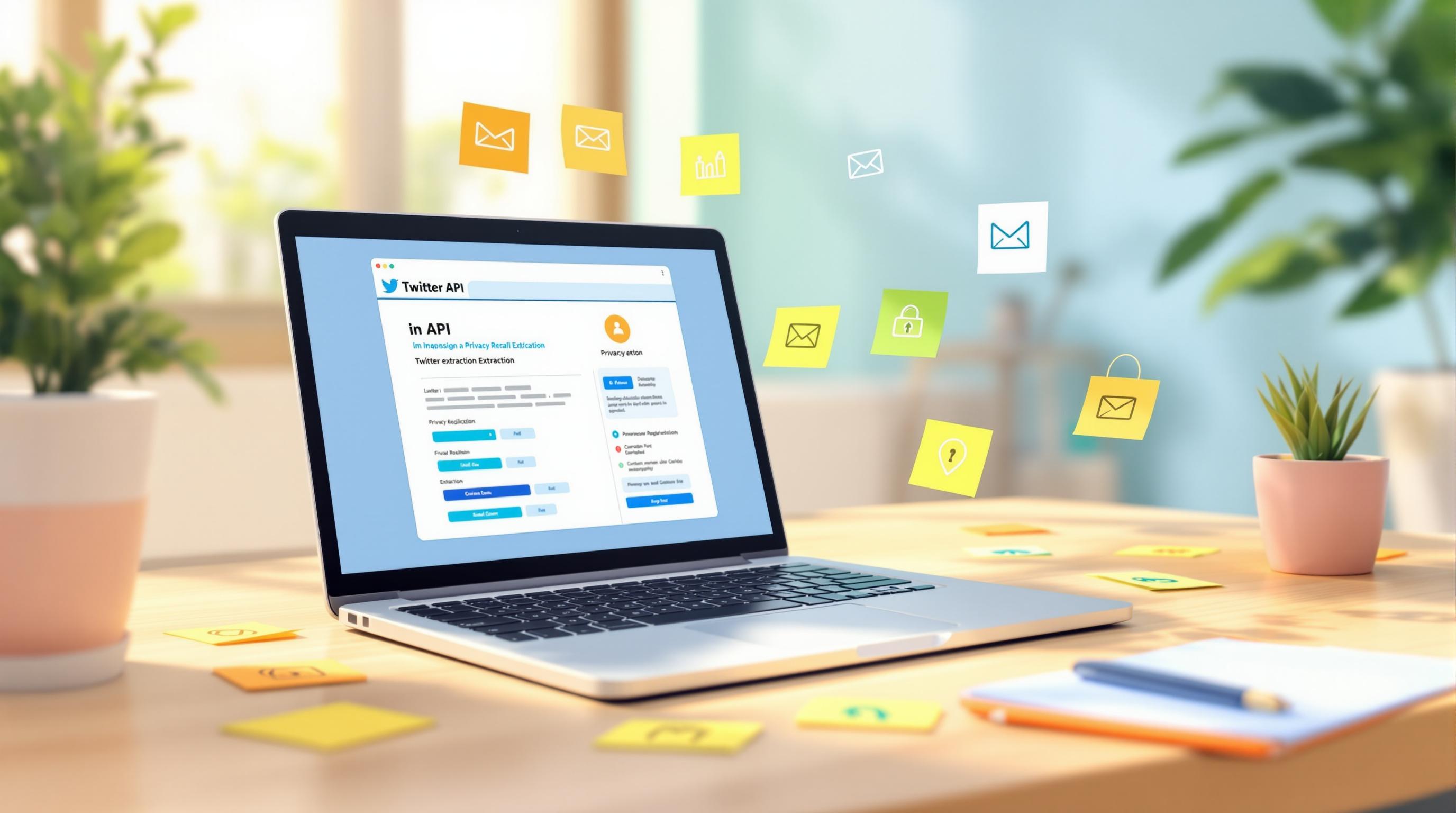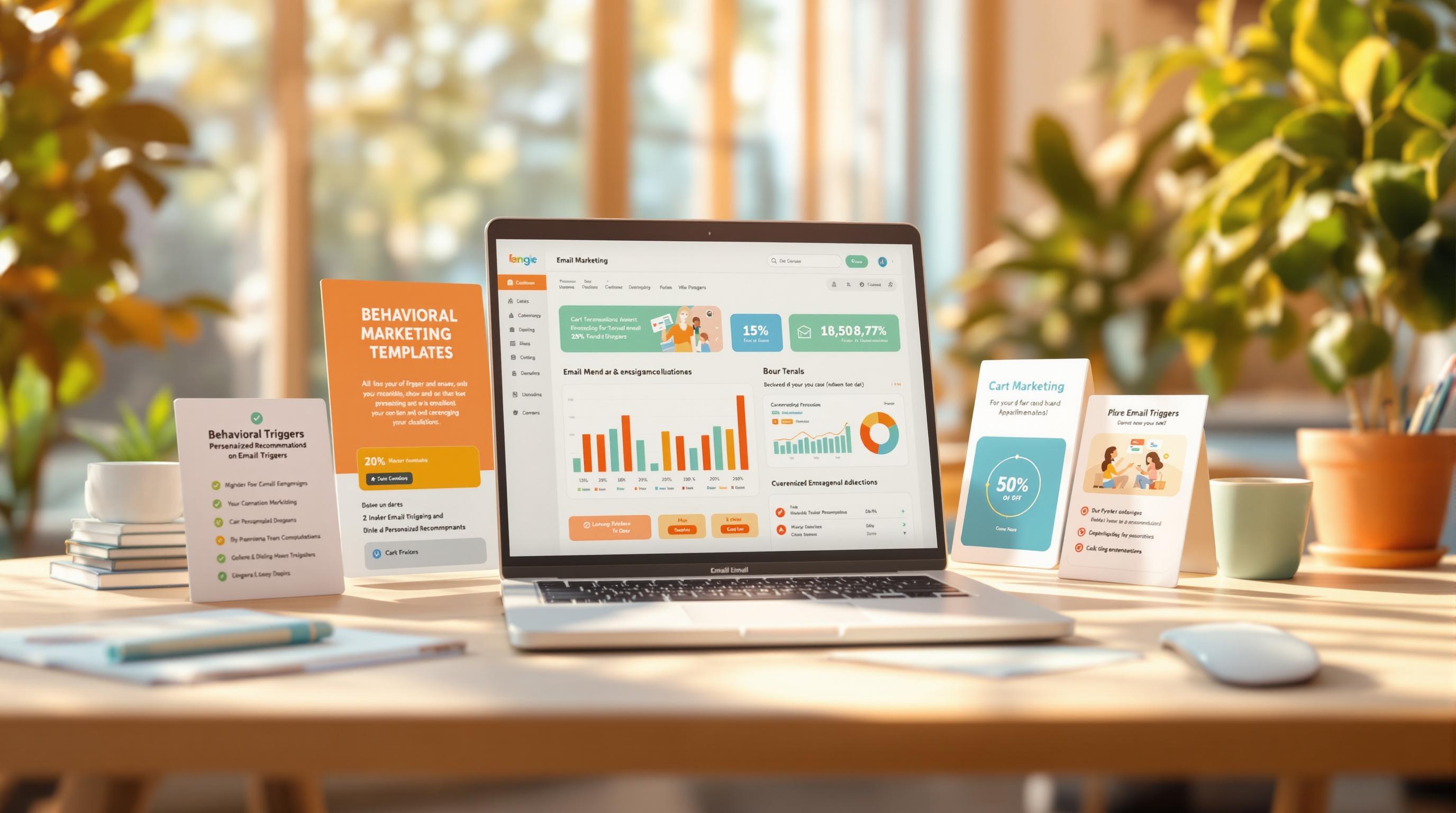- Understand the laws:
-
Key rules to follow:
- Be clear about how you got their contact info.
- Add an easy-to-use unsubscribe option.
- Keep detailed records of consent or legitimate interest.
-
Write better emails:
- Personalize your message to the recipient's role or needs.
- Clearly state why you're reaching out and how you found their details.
- Include a privacy policy link and a clear opt-out option.
-
Stay GDPR-compliant:
- Regularly clean your email lists.
- Secure personal data with encryption and access controls.
- Document data sources and consent records.
-
Use tools wisely:
- Tools like Email Extractor, Lemlist, or HubSpot can help manage compliance but won't guarantee it. Always ensure your outreach aligns with legal requirements.
Remember: Legal cold emails are about respecting privacy, avoiding fines, and building trust. Follow these steps to stay compliant and make your outreach more effective.
Related video from YouTube
Understanding the Rules for Cold Emails
Cold emailing can help you generate leads, but you need to follow specific legal rules. Let's look at the three main laws that control how you can email prospects: GDPR, CAN-SPAM, and PECR.
What is GDPR and How Does It Apply?

The General Data Protection Regulation (GDPR) is the EU's law for handling personal data. It affects every business that contacts EU residents, no matter where that business is located.
Want to send cold emails under GDPR? You have two options: get consent or use legitimate interest. Consent means someone actively agrees to receive your emails - like checking a box to join your mailing list. Legitimate interest works when you have a clear business reason to contact someone - for example, if you sell HR software and email HR managers. But here's the catch: you must document everything and tell people how you got their information.
Key Rules for Legal Cold Emails
Here's what you need to do to stay on the right side of these laws:
- Tell people how you got their contact info and what you'll do with it
- Add an unsubscribe button that actually works
- Keep detailed records of where you got each email address
Here's a wake-up call: In 2021, a UK company had to pay £8,000 for sending marketing emails without permission. It's not just about following rules - it's about protecting your business and reputation.
How Other Laws Like CAN-SPAM and PECR Fit In

Different regions have different rules. CAN-SPAM (US law) is more relaxed - you don't need permission to email someone, but you must include an unsubscribe link and your real address. Break these rules, and you could face fines up to $46,517 per email. PECR follows GDPR's lead for UK contacts.
Here's how they're different:
- GDPR says get permission or have a good reason
- PECR copies GDPR for UK folks
- CAN-SPAM focuses on being honest about who you are and letting people opt out
Tools to Simplify Compliance
Email Extractor Tool - Extract Emails with Ai Automation helps you find email addresses on websites automatically. But remember: just because you can find an email doesn't mean you can use it. Always check that you have the right to contact each person on your list under these laws.
How to Write and Send Legal Cold Emails
Want to send cold emails without breaking the law? Here's how to create emails that get results while staying on the right side of GDPR and other regulations.
Step 1: Establish and Record Legitimate Interest
Before hitting "send" on that cold email, you need a solid reason to contact someone - what's called legitimate interest. This isn't just legal jargon - it's about making sure your outreach makes sense for both parties.
Think of it like this: If you're selling marketing software, reaching out to a marketing manager makes sense. But emailing the IT help desk? Not so much.
Here's what you need to do:
- Write down exactly why you're contacting each person
- Keep records of where you found their contact info
- Document how your offer connects to their job role
Real-world example: Let's say you run a B2B software company. You find HR professionals on LinkedIn who've listed their email for business contacts. That's perfect - just make sure to note down when and where you found this info. It's your proof if anyone asks questions later.
Step 2: Write Clear and Personalized Emails
The best cold emails feel personal and honest. Here's a template that works:
Subject: Quick question about [Company Name]'s [Specific Need]
Hi [Name],
I'm [Your Name] from [Company]. Found you on [Source] and noticed [specific observation about their business]. We help companies like yours [specific benefit].
Got your details from [Source]. Check out our privacy policy here: [Link].
Want to learn more? Just reply. Not interested? There's an unsubscribe link below.
Best, [Your Name]
Key points to nail:
- Show you've done your homework about their company
- Be upfront about how you found them
- Keep it short and focused on their needs
Step 3: Add an Easy Opt-Out Option
Every cold email needs a clear escape hatch. It's not just about following rules - it's about respecting people's choices.
Add a simple line like: "Click here to stop receiving emails from us"
When someone opts out, take them off your list right away. No delays, no questions asked. Keep your email lists clean and current - it's better for everyone.
sbb-itb-8abf799
Tips for Staying GDPR Compliant
Let's look at how to keep your email outreach GDPR-friendly while maintaining effective communication with your audience.
Keep Lead Lists Accurate and Updated
Poor list management isn't just a compliance risk - it can hurt your email performance and get you into legal trouble. Here's what happened to one company: In 2022, a UK-based SaaS company had to pay a £10,000 fine because they kept emailing people who had already opted out.
To avoid similar issues:
- Check your contact lists often - remove people who haven't opened your emails in 12+ months
- Use email checking tools to spot invalid addresses before they cause bounces
- When someone unsubscribes, take them off your list right away - no delays
Protect and Store Personal Data Safely
Data security isn't optional under GDPR. You need strong protection like TLS/SSL encryption for your data, whether it's moving between servers or sitting in storage. Tools like Google Workspace come with built-in security features, including two-factor authentication to control who accesses your data.
Have a plan ready for data breaches. You must tell authorities and affected users within 72 hours if something goes wrong. This quick action pays off - in 2021, a German e-commerce company kept their fine lower by showing they responded fast and notified users on time.
Track Data Sources and Consent
Know where your data comes from and make sure you have permission to use it. Use your CRM to record the source of each email address. When asking for consent, be crystal clear. Here's a simple example:
"By submitting this form, you agree to receive marketing emails from [Company Name]. You can unsubscribe at any time."
Expert insight: "GDPR doesn't say 'don't send cold emails.' It says 'send them in a way that respects people's privacy.'"
Keep an eye on your consent records, especially for long-running campaigns. What was okay last year might not work for your current marketing efforts.
Tools to Help with Email Compliance
Getting your emails to follow GDPR and other laws doesn't have to be a headache. Here's a look at some tools that make compliance simpler while keeping your outreach effective.
Email Extractor Tool - Extract Emails with Ai Automation

The Email Extractor Tool is a Chrome extension that takes the manual work out of building lead lists. It uses AI to spot and collect email addresses from websites, but remember - you'll still need to follow GDPR rules by getting consent or proving legitimate interest.
What makes it stand out:
- Finds emails automatically using AI
- Keeps your data safe with encryption
- Works with Salesforce, HubSpot, and other CRMs
- Fits any budget with different pricing options
- Easy to use and cancel, with quick support when you need it
Here's a real win: One marketing agency cut their lead generation time by 30% after switching to this tool. Plus, their email lists got more accurate, helping them stay on the right side of GDPR.
Other Tools for Email Compliance
Want to make sure your whole email campaign plays by the rules? These tools can help:
SalesBlink handles automated cold emails while tracking consent and keeping data secure. Perfect if you're looking to grow your outreach.
Lemlist shines with its personal touch. It comes with double opt-in features and clear ways for people to unsubscribe - key stuff for staying transparent.
QuickMail works great for smaller companies. It gives you ready-to-use GDPR-friendly email templates and makes managing opt-outs a breeze.
CRM giants like Salesforce and HubSpot pack serious security features, including encryption and extra login protection. They're great at keeping track of where your emails came from and who said yes to receiving them.
Here's proof it works: One SaaS company mixed Lemlist with Salesforce and saw their open rates jump by 15%, all while staying GDPR-friendly.
Expert insight: "Compliance isn't just about avoiding fines - it's about building trust with your audience. Tools that prioritize data security and transparency make it easier to achieve both."
The right tools do more than just keep you compliant - they make your whole email strategy work better.
Conclusion: How to Send Legal Cold Emails
Want to send cold emails without getting into legal trouble? Let's break down what you need to know.
Think of legal cold emailing like building a house - you need a solid foundation and the right tools. Here's how to do it right:
Show why you're reaching out. Let's say you found a marketing director's email on their company website. Make it clear why your product helps their specific role and company. Document these connections - it's your safety net if questions come up.
Keep your contact lists clean. Think of your email list like your fridge - regularly check for expired items. Remove bounced emails and inactive contacts. Use tools to help, but don't rely on them completely.
Be crystal clear in your emails. Tell people exactly:
- How you found them
- Why you're contacting them
- What you want from them
Make it super easy to say goodbye. Put that unsubscribe link where people can see it - not hidden in tiny text at the bottom. And when someone says "remove me", do it right away. No delays, no questions asked.
Guard your data like a bank vault. Tools like Salesforce and HubSpot can help track and protect contact information. But also have a plan ready for what to do if there's a data breach - just like you'd have a fire escape plan for your home.
FAQs
Can you send cold emails to GDPR?
Yes, you can send cold emails under GDPR - but you need to play by the rules. Here's what you need to know:
Think of GDPR compliance like a checklist before hitting "send":
Document Your Why You need a good reason to contact someone - like offering a service that fits their job role or business needs. And you need to write this reason down.
Be Crystal Clear Tell people who you are, why you're emailing them, and how you got their contact info. No mysterious sender names or hiding behind fake addresses!
Make It Easy to Say Goodbye Every. Single. Email. Must have an obvious way to opt out. And when someone says "remove me", do it right away - no questions asked.
Keep Your Lists Clean While tools like Email Extractor Tool - Extract Emails with Ai Automation can help you find leads, it's on you to make sure those contacts are GDPR-friendly.
"GDPR doesn't say 'don't send cold emails.' It says 'send them in a way that respects people's data.'"
Think of GDPR as a set of ground rules for respectful email outreach, not a complete ban on cold emails. It's about being professional and respecting people's privacy while doing business.



